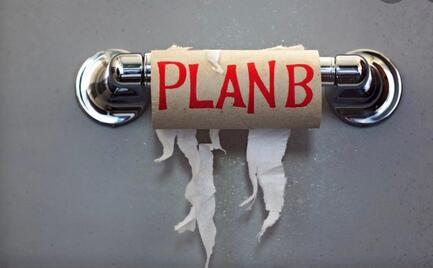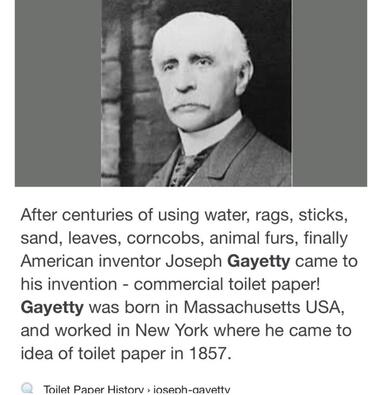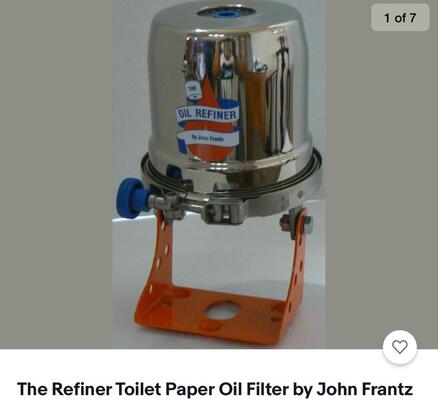|
Hello ‘In the Pipe’rs. Crab season (see upstream post) ain’t over yet but yours truly felt motivated to paddle ashore and broach a subject which he felt was very timely. (Salt water and cell phones are a dangerous pairing.) It’s a subject close to the author’s heart (but even closer to his anatomical sphincter). It’s a subject which PtP feels if not illuminated at this time, could cost the world public (those with flush toilets) even more financial burden than what they might already be suffering due to income loss from the fallout of the Novel Coronavirus, plus: clogged toilets and drains and the fees to ‘get them back on line’? This post takes a look at the dangers of substituting the wrong paper for genuine toilet paper. The author believes that at no other time in recent history is this scenario more probable due to present circumstances. First, there were the Pentagon Papers. Then we got the Panama Papers. And now, lo and behold, we have the Corona Papers. Who would have ever thought the corner stone of personal hygiene, toilet paper, would become the poster child of a 21st century global pandemonium. (Pete the Plumber once came to the rescue of a Mr. D.E. and family (frozen water pipes), so yours truly felt entitled to coin: Corona Papers.) According to the site: HistoryExtra, the earliest known record of using a form of ‘paper’ for this hygienic chore comes from China, in AD 589. However, it was a Yankee in 1857 (New York) by the name of Joseph Gayetty who first started marketing commercially packaged ‘toilet’ paper, Photo 2, below. His were individual sheets with our man Joseph’s picture printed on them. However the masses had to wait another twenty-years before the introduction of perforated rolls (and even then the occasional splinters were a problem). The ubiquitous, super soft, layered fare we know so well today was a twentieth century dream come true. Isn’t it ironic that in the span of about one month a disposable commodity selling (normally) for ‘peanuts’ suddenly became a new gold standard, one everyone clambering for. Our aversion to employing anything else (historical standby’s and Plan B’s) speaks volumes. Pete the Plumber (yours truly confesses) for years has harped to anyone who would listen that only poop and TP should be flushed down the toilet. This admonition served/serves a double purpose. The first concern involves drainage piping and the second concern involves septic systems and sewage treatment plants. Those inaugural individual sheets and albeit splintery perforated rolls are a far cry from today’s quite technical ‘bath tissue’. Today’s TP is made with short cellulose fibers. When the paper is deposited in the toilet bowl and becomes saturated, it breaks down (dissolves) into tiny bits. This assures that it will flow through the sanitary drainage piping without causing a stoppage (clog). The pliable nature of our poop (in most cases) presents little resistance to transit within the piping. (Japanese toilet designers use mochi dough to model human poop to test new toilet passageways.) Most other forms of paper are not made of short fibers designed to dissolve in water. As a matter of fact, household ‘paper towels’ purposely use longer, in-twining fibers to produce a paper resistant to breaking down in water. Paper towels, even if they manage to slide through the toilet passageway will hang up in the drainage piping because of their bulk. Homeowners who need pay the drain cleaning contractor learn this lesson early. Inhabitants of living space served by septic systems are faster learners than a populace served by municipal sewage treatment facilities. There are several concerns involving living with a septic system that the municipally franchised need not concern themselves with (mostly involving bacteria killing household chemicals). But the use of any papers not designated short fiber toilet paper is equally problematic to both types of sanitary system. “In the literature” the author has read conflicting accounts on the biodegradable-ness of short cellulose TP. Some claim it does not biodegrade. Others claim that ‘in time’, it does. As the author has been known to confess skipping chem lab, on too many occasions, he has no chops to question either camp. But, he knows of occupied dwellings operating on septic/leach that never need “pumping” or “additives”. This tells the author that a well designed, well fed septic system takes care of itself. Just don’t poison it. Biodegradable TP is widely available for those on septic who wish to “get the best mileage” out of their hard working bugs. A caveat: biodegradable toilet paper is not as soft as the standard fare. On a different note: Another one of Pete’s ‘hot button’ sanitary paper concerns involves the manufacture of products marketed as flushable. Flushable does not connote dissolvable or biodegradable. Sewage treatment plants end up having to operate sophisticated mechanical systems to intercept, then extract (tons and tons) of non-biodegradable trash. Flushables a majority among it. Then, more expensive rolling stock is required to transport the trash to a land-fill. Who pays the price of recycling what private industry designers concoct from non-degradable material? The City/County/State taxes it’s citizenry to pay the cost of ridding themselves of such garbage. (It’s just going to another spot of ground with a much lower property tax.) The old “vote with your feet” slogan, twisted by twisted minds to shout “vote with your butt” might be heard some evenings, now. The only way to stop and then reverse the “non green” solutions is to educate the public (the market, by association): “Do not make it with ‘these’ materials.” Cut the demand and you see companies rethinking former actions taken. Only then will we begin to reduce the amount of land fill for consumer non-biodegradable materials and lower the costs for sewage treatment. Which brings me back to my old slogan: Flush nothing but poop and toilet paper! For those interested, inexpensive, temperature/flow controlled hand held toilet bidets (served by lavatory faucets) are available for reducing TP usage. Where we end up our battle with the Covid-19 virus is anybody’s guess. But one thing you can be assured of is that tissue mills and paper companies are operating at full employment (with big smiles). How much longer the hoarding of the new, “soft white gold” continues, is an unanswered question. But the industries involved with producing America’s TP are, presently, enjoying robust order sheets. How fast the public stops panic buying and production falls back to pre-pandemic levels, we’ll see, first hand. The author had a couple of automobiles in his early past that used a roll of standard toilet paper as the filter material. (Photo 3) Would that design, after all the present hullabaloo has died down, be worth resurrecting? O.K. That’s it. The fish heads are beautifully stinky. The pot is baited. Short rod and surf rod lashed to deck. It’s back out with the tide, lamps lighted… Until Next Time, PtP
0 Comments
Your comment will be posted after it is approved.
Leave a Reply. |
Author
Peter Hemp is a San Francisco East Bay residential plumber and plumbing author and former R & D steam vehicle plumber. His hobbies are ocean kayaking and touring the Left Coast by bicycle. Archives
September 2021
Categories |
|
|
Copyright © 2017 - 2022
All Rights Reserved
All Rights Reserved






 RSS Feed
RSS Feed